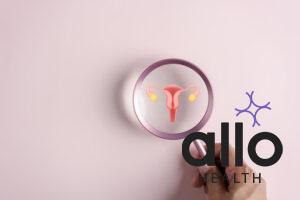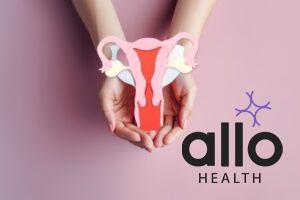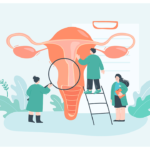Vaginismus: All You Need to Know About the Surgery, Recovery, and Getting Better!

Allo Health is dedicated to personalized well-being, offering support and trusted information tailored to individual health goals. The platform emphasizes human-generated content, led by a distinguished medical team of experts, including physicians and sexual health specialists. Their commitment to credibility involves rigorous fact-checking, authoritative research, and continuous updates to ensure accurate, up-to-date information. Allo Health's unique approach goes beyond conventional platforms, providing expert-led insights and a continuous commitment to excellence, with user feedback playing a crucial role in shaping the platform's authoritative voice.

Ms Rachel graduated with a MSc. in clinical psychology from CMR university, Bangalore. With close to two years of experience in the field of Child and Adolescent Psychology.
Why This Was Upated?
Our experts continually monitor the health and wellness space, and we update our articles when new information became available.
Updated on 02 June, 2024
- Article was updated as part of our commitment to diversity, equity, and inclusion.

"The following blog article may discuss medical treatments and interventions. However, it is important to note that the information provided is for general educational purposes only and should not be considered as a substitute for professional medical advice, diagnosis, or treatment. Always seek the guidance of a qualified healthcare professional for personalized medical advice.
Book consultation
Medical treatments are complex and should be tailored to individual circumstances. The information presented in this blog may not be applicable to everyone, as each person's medical condition, history, and needs are unique. Only a qualified healthcare professional can evaluate your specific medical situation, consider relevant factors, and provide appropriate recommendations for diagnosis, treatment options, and monitoring.
It is crucial to note that self-diagnosis, self-medication, or relying solely on the information provided in this blog for treatment decisions can have serious health consequences. "
Pelvic floor muscles are responsible for various functions, including supporting the pelvic organs and controlling urination and bowel movements. For countless women worldwide, the involuntary contraction of these muscles causes discomfort or pain during sexual intercourse, tampon insertion, or gynecological exams, a condition known as vaginismus. While it may feel like a hopeless situation, vaginismus surgery has emerged as a viable treatment option for those struggling with this condition.
What is Vaginismus?
Vaginismus is a medical condition characterized by the involuntary tightening of the vaginal muscles, making penetration difficult or even impossible. This tightening, or spasm, can cause significant pain and discomfort, negatively impacting a woman’s sexual life, self-esteem, and relationships.
There are two types of vaginismus:
- Primary vaginismus: This type occurs when a woman has never been able to achieve penetration without pain. It can be present from a woman’s first attempt at sexual intercourse or tampon insertion.
- Secondary vaginismus: This type develops later in life, often after a period of pain-free sexual activity. It can be triggered by various factors, such as childbirth, menopause, or a traumatic event.
Causes of Vaginismus
The exact cause of vaginismus is often unknown, but it is generally thought to be a combination of physical and psychological factors. Some common causes include:
- Psychological factors: Anxiety, fear, guilt, shame, or past psychological trauma can contribute to vaginismus. Women who have experienced sexual abuse or trauma may develop vaginismus as a defense mechanism to prevent further sexual pain or trauma during sexual activity.
- Physical factors: Conditions such as endometriosis, vulvodynia, infections, or hormonal imbalances can cause vaginal pain or discomfort and contribute to vaginismus. The onset of menopause can be a contributing factor to the development of vaginismus in some women. During menopause, there is a decline in estrogen levels, which can cause the vaginal tissues to become thinner, drier, and less elastic. This can lead to pain and discomfort during sexual activity, which can in turn lead to muscle tension and involuntary contractions in the pelvic floor muscles.
- Relationship factors: Communication issues, relationship problems, emotional factors or lack of emotional connection with a partner can also contribute to vaginismus.
- Cultural or religious factors: Cultural or religious beliefs that view sex as taboo or shameful can lead to anxiety or guilt and contribute to vaginismus.
- Lack of sexual education: Lack of information or education about sex, sexual anatomy, and sexual function can lead to anxiety, fear, or confusion about sexual activity and contribute to vaginismus.
Diagnosing Vaginismus

A thorough medical evaluation, including a physical examination and patient history, is necessary for diagnosing vaginismus. Gynecologists may also conduct a pelvic exam or use a cotton swab test to determine the presence and severity of the condition.
Non-Surgical Treatments for Vaginismus
Some of the common non-surgical treatments include:
- Pelvic floor physical therapy: This involves working with a physical therapist who specializes in pelvic floor muscle therapy to learn relaxation and stretching exercises for the pelvic floor muscles.
- Vaginal dilation: This involves gradually inserting a set of medical instruments called graded vaginal dilators of different sizes into the vagina to help stretch and desensitize the vaginal muscles.
- Cognitive-behavioral therapy (CBT): This type of therapy helps women to identify and change negative thoughts or beliefs that contribute to vaginismus, and develop healthy coping strategies.
- Sex therapy: This involves people with vaginismus working with a sex therapist to improve communication and intimacy with a partner, and learn techniques for comfortable and pleasurable sexual activity.
- Medications: In some cases, doctors may prescribe medications to help manage pain or anxiety related to vaginismus.
- Progressive Desensitization: Progressive desensitization is a technique commonly used in the treatment of vaginismus. This treatment plan involves gradually exposing the woman to increasing levels of vaginal penetration, in a way that is comfortable and non-threatening. The goal of this approach is to help the woman overcome fear and anxiety associated with vaginal penetration and to gradually build confidence and comfort with sexual activity.The process of progressive desensitization typically involves the use of vaginal dilators of different sizes, which the woman can use to gradually stretch and relax the vaginal muscles. However, it can also be done with fingers. The woman begins by using the smallest size dilator and gradually works her way up to larger sizes as she becomes more comfortable with each level of penetration.
In addition to using dilators, the process of progressive desensitization may also involve kegel exercises to help relax the pelvic floor muscles, as well as cognitive-behavioral techniques to address any negative thoughts or beliefs that may be contributing to the woman’s anxiety in her sex life.
When to Consider Vaginismus Surgery
If non-surgical treatments have been exhausted without success, a woman may consider vaginismus surgery. This option is typically reserved for those with severe cases or those who have not experienced significant improvement through conservative measures.
Types of Vaginismus Surgery
There are several surgical procedures available to treat vaginismus. The most common options include:
Botox Injections
Botulinum toxin (Botox) injections can be used to temporarily paralyze the overactive vaginal muscles, allowing for easier vaginal penetration and reduced pain during penetration. This treatment is minimally invasive and usually performed under local anesthesia.
Vestibulectomy
This surgical procedure involves the removal of the hymenal remnants and inflamed tissue surrounding the vaginal opening. It is typically performed under general anesthesia and may be combined with other treatments, such as pelvic floor physical therapy (this procedure is done only if it is medically proven that it’s required)
Perineoplasty
A perineoplasty is a reconstructive surgery that involves the repair and tightening of the perineal muscles and tissues surrounding the vaginal opening. This procedure can help to reduce pain and discomfort associated with vaginismus by improving muscle function and tone.
Preparing for Vaginismus Surgery
Before undergoing vaginismus surgery, a woman should discuss the risks and benefits with her healthcare provider. Pre-surgical evaluations, such as blood tests and imaging studies, may be necessary to ensure the patient’s overall health and candidacy for the procedure.
In some cases, additional tests may be performed to rule out other conditions that may contribute to vaginal pain or discomfort, such as infections or pelvic floor disorders. These tests may include:
- Pelvic ultrasound: A non-invasive test that uses high-frequency sound waves to create images of the pelvic organs.
- Magnetic resonance imaging (MRI): A non-invasive test that uses powerful magnets and radio waves to create detailed images of the pelvic area.
- Vaginal cultures: A sample of vaginal discharge may be collected to test for infections or sexually transmitted diseases (STDs).
- Pelvic floor muscle assessment: A physical therapist may assess the strength and function of the pelvic floor muscles.
The Surgical Process
The surgical process will vary depending on the type of procedure being performed. In general, vaginismus surgery is an outpatient procedure, meaning patients can return home the same day. Local or general anesthesia will be administered, and the surgery itself may last from 30 minutes to a few hours, depending on the complexity of the case.

Post-Operative Care and Recovery
Following vaginismus surgery, patients will receive detailed post-operative care instructions. These may include:
- Pain management strategies, such as over-the-counter pain relievers or prescription medications
- Wound care and hygiene, including keeping the surgical site clean and dry
- Activity restrictions, such as refraining from sexual intercourse, tampon use, or strenuous exercise for a specified period
- Follow-up appointments with the surgeon or healthcare provider to monitor healing and progress
The recovery period will vary depending on the type of surgery performed and the individual patient’s healing process. However, most patients can expect to see improvements in their symptoms within a few weeks to months following the procedure.
Risks and Complications
As with any surgical procedure, there are potential risks and complications associated with vaginismus surgery. These may include:
- Infection
- Bleeding
- Scarring
- Damage to surrounding tissues or nerves
- Recurrence of vaginismus symptoms
- Changes in sexual sensation or function
It is essential to discuss these risks with your healthcare provider before deciding to undergo vaginismus surgery.
Summary
- Vaginismus: It’s a condition where vaginal muscles involuntarily tighten, causing pain during penetration and affecting a woman’s sexual life and well-being.
- Types and Causes: Primary and secondary vaginismus can be caused by psychological factors (anxiety, trauma), physical factors (endometriosis, hormonal imbalances), relationship issues, cultural factors, and lack of sexual education.
- Non-Surgical Treatments: Common treatments include pelvic floor physical therapy, vaginal dilation, cognitive-behavioral therapy (CBT), sex therapy, and sometimes medications.
- Progressive Desensitization: This technique involves gradual exposure to vaginal penetration using dilators or fingers, combined with exercises and cognitive-behavioral strategies.
- Surgery Consideration: Surgery is an option for severe cases or when non-surgical treatments have not been effective.
- Types of Surgery: Surgical options include Botox injections, vestibulectomy, and perineoplasty, each addressing different aspects of vaginismus.
Frequently Asked Questions
Q: What are the causes of painful intercourse?
A: Painful intercourse, or dyspareunia, can be caused by various factors:
- Medical Conditions: Conditions like vaginismus, endometriosis, pelvic inflammatory disease, and infections can lead to discomfort or pain during intercourse.
- Hormonal Imbalances: Fluctuations in hormone levels, especially during menopause, can result in vaginal dryness and discomfort during penetration.
- Psychological Factors: Anxiety, stress, past trauma, or relationship issues can contribute to heightened sensitivity and pain during sexual activity.
Q: What is the cost of Vaginismus surgery?
A: The cost of vaginismus surgery in India can vary depending on various factors such as the type of surgery, the hospital or clinic where the surgery is performed, the location, and the surgeon’s fee. Generally, the cost of vaginismus surgery in India ranges from INR 75,000 to INR 1,50,000 (approximately USD 1000 to USD 2000). However, this is just an approximate range, and the actual cost may vary depending on individual circumstances.
It’s recommended to consult with a healthcare provider or a hospital/clinic directly to obtain a more accurate estimate of the cost based on your specific situation.
Q: Will insurance cover the procedure?
A: Insurance coverage for vaginismus surgery will depend on the specific insurance plan and the medical necessity of the procedure. In some cases, insurance providers may cover part or all of the costs if it is deemed medically necessary and non-surgical treatments have been exhausted without success. It is crucial to check with your insurance provider to understand your coverage and any out-of-pocket expenses you may be responsible for.
Q: How long does it take to see results after surgery?
A: The timeline for seeing results after vaginismus surgery can vary depending on the type of procedure performed and the individual patient’s healing process. Generally, most patients can expect to see improvements in their symptoms within a few weeks to months following the procedure. However, it is essential to be patient and follow your healthcare provider’s post-operative care instructions to ensure optimal healing and recovery.
Q: Can vaginismus surgery affect fertility or pregnancy?
A: Vaginismus surgery typically does not directly affect fertility or pregnancy. However, it is important to discuss any concerns related to fertility and pregnancy with your healthcare provider before undergoing the procedure. In some cases, vaginismus surgery may improve a woman’s ability to conceive and engage in sexual activity without pain, potentially increasing the chances of a successful pregnancy.
Q: What is the success rate of vaginismus surgery?
A: The success rate of vaginismus surgery can vary depending on the type of procedure performed and the individual patient’s circumstances. Generally, studies have reported success rates ranging from 70% to 90% for various surgical treatments. It is important to note that success in this context typically refers to a reduction in discomfort and pain during sex and an improvement in the patient’s overall quality of life. As with any medical procedure, there is no guarantee of success, and it is essential to discuss the potential outcomes with your healthcare provider before undergoing vaginismus surgery.
Sources:
- American College of Obstetricians and Gynecologists (ACOG). (2020). Vaginismus. Retrieved from https://www.acog.org/womens-health/faqs/vaginismus
- Mayo Clinic. (2020). Vaginismus diagnosis and treatment. Retrieved from https://www.mayoclinic.org/diseases-conditions/vaginismus/diagnosis-treatment/drc-20352292
- International Society for the Study of Women’s Sexual Health (ISSWSH). (2018). Vaginismus. Retrieved from https://www.isswsh.org/sexual-health-education/vulvovaginal-disorders/vaginismus
- Credihealth. (2022). Vaginismus Treatment Cost in India. Retrieved from https://www.credihealth.com/procedure/india/vaginismus-treatment-cost
- Medifee. (2022). Vaginismus Surgery Cost in India. Retrieved from https://www.medifee.com/treatment/vaginismus-surgery-cost-in-india/






































